-
EXECUTIVE SUMMARY
-
Market Overview
-
Key Findings
-
Market Segmentation
-
Competitive Landscape
-
Challenges and Opportunities
-
Future Outlook
-
MARKET INTRODUCTION
-
Definition
-
Scope of the study
- Research Objective
- Assumption
- Limitations
-
RESEARCH METHODOLOGY
-
Overview
-
Data Mining
-
3.3.
-
Secondary Research
-
Primary Research
- Primary Interviews and
- Breakdown of Primary Respondents
-
Information Gathering Process
-
Forecasting Model
-
Market Size Estimation
- Bottom-Up
- Top-Down Approach
-
Approach
-
Data Triangulation
-
3.8.
-
Validation
-
MARKET DYNAMICS
-
Overview
-
Drivers
-
Restraints
-
Opportunities
-
MARKET FACTOR ANALYSIS
-
Value chain Analysis
-
Porter's Five Forces Analysis
- Bargaining Power of Buyers
- Threat of Substitutes
- Intensity
-
5.2.1.
-
Bargaining Power of Suppliers
-
5.2.3.
-
Threat of New Entrants
-
of Rivalry
-
COVID-19 Impact Analysis
- Market Impact Analysis
- Regional Impact
- Opportunity and Threat Analysis
-
GLOVE BOX MARKET, BY TYPE (USD BILLION)
-
Standard Glove
-
Box
-
Modified Atmosphere Glove Box
-
Biological Glove Box
-
Radioactive Glove Box
-
GLOVE BOX MARKET, BY MATERIAL (USD BILLION)
-
Polycarbonate
-
Polypropylene
-
Stainless Steel
-
Aluminum
-
Glass
-
GLOVE BOX MARKET, BY APPLICATION (USD
-
BILLION)
-
Pharmaceuticals
-
Chemical Processing
-
Research
-
Laboratories
-
Electronics
-
GLOVE BOX MARKET, BY END USE (USD BILLION)
-
Laboratories
-
Manufacturing Facilities
-
Hospitals
-
Research Institutions
-
GLOVE BOX MARKET, BY FUNCTIONALITY (USD
-
BILLION)
-
Hazardous Material Handling
-
Controlled Environment
-
Maintenance
-
Sample Preparation
-
Waste Management
-
11.
-
GLOVE BOX MARKET, BY REGIONAL (USD BILLION)
-
North America
- Canada
-
11.1.1.
-
US
-
Europe
- Germany
- UK
- France
- Russia
- Italy
- Spain
- Rest of Europe
-
APAC
- China
- Japan
- South Korea
- Malaysia
- Indonesia
- Rest of APAC
-
11.3.2.
-
India
-
11.3.6.
-
Thailand
-
South America
- Brazil
- Mexico
- Argentina
-
11.4.4.
-
Rest of South America
-
MEA
- GCC Countries
- Rest of MEA
-
11.5.2.
-
South Africa
-
COMPETITIVE LANDSCAPE
-
Overview
-
Competitive Analysis
-
Market share Analysis
-
Major Growth Strategy in the Glove Box Market
-
Competitive
-
Benchmarking
-
Leading Players in Terms of Number of Developments in the
-
Glove Box Market
-
Key developments and growth strategies
- Merger & Acquisitions
- Joint Ventures
-
12.7.1.
-
New Product Launch/Service Deployment
-
Major Players Financial Matrix
- Major Players R&D Expenditure. 2023
-
12.8.1.
-
Sales and Operating Income
-
COMPANY PROFILES
-
VIASPACE
- Financial Overview
- Products Offered
- Key Developments
- SWOT
- Key Strategies
-
Analysis
-
Esco Lifesciences
- Products Offered
- Key Developments
- SWOT Analysis
- Key Strategies
-
13.2.1.
-
Financial Overview
-
Cleveland Steel
- Financial Overview
- Products Offered
- SWOT Analysis
- Key Strategies
- Financial Overview
- Products Offered
- SWOT Analysis
- Key Strategies
- Financial Overview
- Products Offered
- SWOT Analysis
- Key Strategies
- Financial Overview
- Products Offered
- SWOT Analysis
- Key Strategies
- Financial Overview
- Products Offered
- SWOT Analysis
- Key Strategies
- Financial Overview
- Products Offered
- Key Developments
- SWOT Analysis
- Key Strategies
-
Container
-
13.3.3.
-
Key Developments
-
13.4.
-
Shellab
-
13.4.3.
-
Key Developments
-
13.5.
-
Cella
-
13.5.3.
-
Key Developments
-
13.6.
-
NuAire
-
13.6.3.
-
Key Developments
-
13.7.
-
Glovebox
-
13.7.3.
-
Key Developments
-
13.8.
-
Kewaunee Scientific
-
Safety Storage Solutions
- Financial Overview
- Key Developments
- SWOT Analysis
- Key Strategies
-
13.9.2.
-
Products Offered
-
Biosafety Cabinet
- Financial
- Products Offered
- Key Developments
- Key Strategies
-
Overview
-
13.10.4.
-
SWOT Analysis
-
Axygen
- Financial
- Products Offered
- Key Developments
- Key Strategies
-
Overview
-
13.11.4.
-
SWOT Analysis
-
Thermo Fisher Scientific
- Financial Overview
- Products Offered
- SWOT Analysis
- Key Strategies
-
13.12.3.
-
Key Developments
-
Labconco
- Financial Overview
- Products Offered
- Key Developments
- SWOT Analysis
- Key
-
Strategies
-
APPENDIX
-
References
-
Related Reports
-
LIST OF TABLES
-
LIST OF ASSUMPTIONS
-
NORTH
-
AMERICA GLOVE BOX MARKET SIZE ESTIMATES & FORECAST, BY TYPE, 2019-2032 (USD
-
BILLIONS)
-
NORTH AMERICA GLOVE BOX MARKET SIZE ESTIMATES & FORECAST,
-
BY MATERIAL, 2019-2032 (USD BILLIONS)
-
NORTH AMERICA GLOVE BOX MARKET
-
SIZE ESTIMATES & FORECAST, BY APPLICATION, 2019-2032 (USD BILLIONS)
-
TABLE
-
NORTH AMERICA GLOVE BOX MARKET SIZE ESTIMATES & FORECAST, BY END USE, 2019-2032
-
(USD BILLIONS)
-
NORTH AMERICA GLOVE BOX MARKET SIZE ESTIMATES &
-
FORECAST, BY FUNCTIONALITY, 2019-2032 (USD BILLIONS)
-
NORTH AMERICA
-
GLOVE BOX MARKET SIZE ESTIMATES & FORECAST, BY REGIONAL, 2019-2032 (USD BILLIONS)
-
US GLOVE BOX MARKET SIZE ESTIMATES & FORECAST, BY TYPE, 2019-2032
-
(USD BILLIONS)
-
US GLOVE BOX MARKET SIZE ESTIMATES & FORECAST,
-
BY MATERIAL, 2019-2032 (USD BILLIONS)
-
US GLOVE BOX MARKET SIZE ESTIMATES
-
& FORECAST, BY APPLICATION, 2019-2032 (USD BILLIONS)
-
US GLOVE
-
BOX MARKET SIZE ESTIMATES & FORECAST, BY END USE, 2019-2032 (USD BILLIONS)
-
US GLOVE BOX MARKET SIZE ESTIMATES & FORECAST, BY FUNCTIONALITY,
-
US GLOVE BOX MARKET SIZE ESTIMATES &
-
FORECAST, BY REGIONAL, 2019-2032 (USD BILLIONS)
-
CANADA GLOVE BOX
-
MARKET SIZE ESTIMATES & FORECAST, BY TYPE, 2019-2032 (USD BILLIONS)
-
TABLE
-
CANADA GLOVE BOX MARKET SIZE ESTIMATES & FORECAST, BY MATERIAL, 2019-2032
-
(USD BILLIONS)
-
CANADA GLOVE BOX MARKET SIZE ESTIMATES & FORECAST,
-
BY APPLICATION, 2019-2032 (USD BILLIONS)
-
CANADA GLOVE BOX MARKET
-
SIZE ESTIMATES & FORECAST, BY END USE, 2019-2032 (USD BILLIONS)
-
TABLE
-
CANADA GLOVE BOX MARKET SIZE ESTIMATES & FORECAST, BY FUNCTIONALITY, 2019-2032
-
(USD BILLIONS)
-
CANADA GLOVE BOX MARKET SIZE ESTIMATES & FORECAST,
-
BY REGIONAL, 2019-2032 (USD BILLIONS)
-
EUROPE GLOVE BOX MARKET SIZE
-
ESTIMATES & FORECAST, BY TYPE, 2019-2032 (USD BILLIONS)
-
EUROPE
-
GLOVE BOX MARKET SIZE ESTIMATES & FORECAST, BY MATERIAL, 2019-2032 (USD BILLIONS)
-
EUROPE GLOVE BOX MARKET SIZE ESTIMATES & FORECAST, BY APPLICATION,
-
EUROPE GLOVE BOX MARKET SIZE ESTIMATES
-
& FORECAST, BY END USE, 2019-2032 (USD BILLIONS)
-
EUROPE GLOVE
-
BOX MARKET SIZE ESTIMATES & FORECAST, BY FUNCTIONALITY, 2019-2032 (USD BILLIONS)
-
EUROPE GLOVE BOX MARKET SIZE ESTIMATES & FORECAST, BY REGIONAL,
-
GERMANY GLOVE BOX MARKET SIZE ESTIMATES
-
& FORECAST, BY TYPE, 2019-2032 (USD BILLIONS)
-
GERMANY GLOVE
-
BOX MARKET SIZE ESTIMATES & FORECAST, BY MATERIAL, 2019-2032 (USD BILLIONS)
-
GERMANY GLOVE BOX MARKET SIZE ESTIMATES & FORECAST, BY APPLICATION,
-
GERMANY GLOVE BOX MARKET SIZE ESTIMATES
-
& FORECAST, BY END USE, 2019-2032 (USD BILLIONS)
-
GERMANY GLOVE
-
BOX MARKET SIZE ESTIMATES & FORECAST, BY FUNCTIONALITY, 2019-2032 (USD BILLIONS)
-
GERMANY GLOVE BOX MARKET SIZE ESTIMATES & FORECAST, BY REGIONAL,
-
UK GLOVE BOX MARKET SIZE ESTIMATES &
-
FORECAST, BY TYPE, 2019-2032 (USD BILLIONS)
-
UK GLOVE BOX MARKET
-
SIZE ESTIMATES & FORECAST, BY MATERIAL, 2019-2032 (USD BILLIONS)
-
TABLE
-
UK GLOVE BOX MARKET SIZE ESTIMATES & FORECAST, BY APPLICATION, 2019-2032
-
(USD BILLIONS)
-
UK GLOVE BOX MARKET SIZE ESTIMATES & FORECAST,
-
BY END USE, 2019-2032 (USD BILLIONS)
-
UK GLOVE BOX MARKET SIZE ESTIMATES
-
& FORECAST, BY FUNCTIONALITY, 2019-2032 (USD BILLIONS)
-
UK GLOVE
-
BOX MARKET SIZE ESTIMATES & FORECAST, BY REGIONAL, 2019-2032 (USD BILLIONS)
-
FRANCE GLOVE BOX MARKET SIZE ESTIMATES & FORECAST, BY TYPE,
-
FRANCE GLOVE BOX MARKET SIZE ESTIMATES
-
& FORECAST, BY MATERIAL, 2019-2032 (USD BILLIONS)
-
FRANCE GLOVE
-
BOX MARKET SIZE ESTIMATES & FORECAST, BY APPLICATION, 2019-2032 (USD BILLIONS)
-
FRANCE GLOVE BOX MARKET SIZE ESTIMATES & FORECAST, BY END USE,
-
FRANCE GLOVE BOX MARKET SIZE ESTIMATES
-
& FORECAST, BY FUNCTIONALITY, 2019-2032 (USD BILLIONS)
-
FRANCE
-
GLOVE BOX MARKET SIZE ESTIMATES & FORECAST, BY REGIONAL, 2019-2032 (USD BILLIONS)
-
RUSSIA GLOVE BOX MARKET SIZE ESTIMATES & FORECAST, BY TYPE,
-
RUSSIA GLOVE BOX MARKET SIZE ESTIMATES
-
& FORECAST, BY MATERIAL, 2019-2032 (USD BILLIONS)
-
RUSSIA GLOVE
-
BOX MARKET SIZE ESTIMATES & FORECAST, BY APPLICATION, 2019-2032 (USD BILLIONS)
-
RUSSIA GLOVE BOX MARKET SIZE ESTIMATES & FORECAST, BY END USE,
-
RUSSIA GLOVE BOX MARKET SIZE ESTIMATES
-
& FORECAST, BY FUNCTIONALITY, 2019-2032 (USD BILLIONS)
-
RUSSIA
-
GLOVE BOX MARKET SIZE ESTIMATES & FORECAST, BY REGIONAL, 2019-2032 (USD BILLIONS)
-
ITALY GLOVE BOX MARKET SIZE ESTIMATES & FORECAST, BY TYPE, 2019-2032
-
(USD BILLIONS)
-
ITALY GLOVE BOX MARKET SIZE ESTIMATES & FORECAST,
-
BY MATERIAL, 2019-2032 (USD BILLIONS)
-
ITALY GLOVE BOX MARKET SIZE
-
ESTIMATES & FORECAST, BY APPLICATION, 2019-2032 (USD BILLIONS)
-
TABLE 53.
-
ITALY GLOVE BOX MARKET SIZE ESTIMATES & FORECAST, BY END USE, 2019-2032 (USD
-
BILLIONS)
-
ITALY GLOVE BOX MARKET SIZE ESTIMATES & FORECAST,
-
BY FUNCTIONALITY, 2019-2032 (USD BILLIONS)
-
ITALY GLOVE BOX MARKET
-
SIZE ESTIMATES & FORECAST, BY REGIONAL, 2019-2032 (USD BILLIONS)
-
TABLE
-
SPAIN GLOVE BOX MARKET SIZE ESTIMATES & FORECAST, BY TYPE, 2019-2032 (USD
-
BILLIONS)
-
SPAIN GLOVE BOX MARKET SIZE ESTIMATES & FORECAST,
-
BY MATERIAL, 2019-2032 (USD BILLIONS)
-
SPAIN GLOVE BOX MARKET SIZE
-
ESTIMATES & FORECAST, BY APPLICATION, 2019-2032 (USD BILLIONS)
-
TABLE 59.
-
SPAIN GLOVE BOX MARKET SIZE ESTIMATES & FORECAST, BY END USE, 2019-2032 (USD
-
BILLIONS)
-
SPAIN GLOVE BOX MARKET SIZE ESTIMATES & FORECAST,
-
BY FUNCTIONALITY, 2019-2032 (USD BILLIONS)
-
SPAIN GLOVE BOX MARKET
-
SIZE ESTIMATES & FORECAST, BY REGIONAL, 2019-2032 (USD BILLIONS)
-
TABLE
-
REST OF EUROPE GLOVE BOX MARKET SIZE ESTIMATES & FORECAST, BY TYPE, 2019-2032
-
(USD BILLIONS)
-
REST OF EUROPE GLOVE BOX MARKET SIZE ESTIMATES &
-
FORECAST, BY MATERIAL, 2019-2032 (USD BILLIONS)
-
REST OF EUROPE GLOVE
-
BOX MARKET SIZE ESTIMATES & FORECAST, BY APPLICATION, 2019-2032 (USD BILLIONS)
-
REST OF EUROPE GLOVE BOX MARKET SIZE ESTIMATES & FORECAST, BY
-
END USE, 2019-2032 (USD BILLIONS)
-
REST OF EUROPE GLOVE BOX MARKET
-
SIZE ESTIMATES & FORECAST, BY FUNCTIONALITY, 2019-2032 (USD BILLIONS)
-
TABLE
-
REST OF EUROPE GLOVE BOX MARKET SIZE ESTIMATES & FORECAST, BY REGIONAL,
-
APAC GLOVE BOX MARKET SIZE ESTIMATES &
-
FORECAST, BY TYPE, 2019-2032 (USD BILLIONS)
-
APAC GLOVE BOX MARKET
-
SIZE ESTIMATES & FORECAST, BY MATERIAL, 2019-2032 (USD BILLIONS)
-
TABLE
-
APAC GLOVE BOX MARKET SIZE ESTIMATES & FORECAST, BY APPLICATION, 2019-2032
-
(USD BILLIONS)
-
APAC GLOVE BOX MARKET SIZE ESTIMATES & FORECAST,
-
BY END USE, 2019-2032 (USD BILLIONS)
-
APAC GLOVE BOX MARKET SIZE
-
ESTIMATES & FORECAST, BY FUNCTIONALITY, 2019-2032 (USD BILLIONS)
-
TABLE
-
APAC GLOVE BOX MARKET SIZE ESTIMATES & FORECAST, BY REGIONAL, 2019-2032
-
(USD BILLIONS)
-
CHINA GLOVE BOX MARKET SIZE ESTIMATES & FORECAST,
-
BY TYPE, 2019-2032 (USD BILLIONS)
-
CHINA GLOVE BOX MARKET SIZE ESTIMATES
-
& FORECAST, BY MATERIAL, 2019-2032 (USD BILLIONS)
-
CHINA GLOVE
-
BOX MARKET SIZE ESTIMATES & FORECAST, BY APPLICATION, 2019-2032 (USD BILLIONS)
-
CHINA GLOVE BOX MARKET SIZE ESTIMATES & FORECAST, BY END USE,
-
CHINA GLOVE BOX MARKET SIZE ESTIMATES &
-
FORECAST, BY FUNCTIONALITY, 2019-2032 (USD BILLIONS)
-
CHINA GLOVE
-
BOX MARKET SIZE ESTIMATES & FORECAST, BY REGIONAL, 2019-2032 (USD BILLIONS)
-
INDIA GLOVE BOX MARKET SIZE ESTIMATES & FORECAST, BY TYPE, 2019-2032
-
(USD BILLIONS)
-
INDIA GLOVE BOX MARKET SIZE ESTIMATES & FORECAST,
-
BY MATERIAL, 2019-2032 (USD BILLIONS)
-
INDIA GLOVE BOX MARKET SIZE
-
ESTIMATES & FORECAST, BY APPLICATION, 2019-2032 (USD BILLIONS)
-
TABLE 83.
-
INDIA GLOVE BOX MARKET SIZE ESTIMATES & FORECAST, BY END USE, 2019-2032 (USD
-
BILLIONS)
-
INDIA GLOVE BOX MARKET SIZE ESTIMATES & FORECAST,
-
BY FUNCTIONALITY, 2019-2032 (USD BILLIONS)
-
INDIA GLOVE BOX MARKET
-
SIZE ESTIMATES & FORECAST, BY REGIONAL, 2019-2032 (USD BILLIONS)
-
TABLE
-
JAPAN GLOVE BOX MARKET SIZE ESTIMATES & FORECAST, BY TYPE, 2019-2032 (USD
-
BILLIONS)
-
JAPAN GLOVE BOX MARKET SIZE ESTIMATES & FORECAST,
-
BY MATERIAL, 2019-2032 (USD BILLIONS)
-
JAPAN GLOVE BOX MARKET SIZE
-
ESTIMATES & FORECAST, BY APPLICATION, 2019-2032 (USD BILLIONS)
-
TABLE 89.
-
JAPAN GLOVE BOX MARKET SIZE ESTIMATES & FORECAST, BY END USE, 2019-2032 (USD
-
BILLIONS)
-
JAPAN GLOVE BOX MARKET SIZE ESTIMATES & FORECAST,
-
BY FUNCTIONALITY, 2019-2032 (USD BILLIONS)
-
JAPAN GLOVE BOX MARKET
-
SIZE ESTIMATES & FORECAST, BY REGIONAL, 2019-2032 (USD BILLIONS)
-
TABLE
-
SOUTH KOREA GLOVE BOX MARKET SIZE ESTIMATES & FORECAST, BY TYPE, 2019-2032
-
(USD BILLIONS)
-
SOUTH KOREA GLOVE BOX MARKET SIZE ESTIMATES &
-
FORECAST, BY MATERIAL, 2019-2032 (USD BILLIONS)
-
SOUTH KOREA GLOVE
-
BOX MARKET SIZE ESTIMATES & FORECAST, BY APPLICATION, 2019-2032 (USD BILLIONS)
-
SOUTH KOREA GLOVE BOX MARKET SIZE ESTIMATES & FORECAST, BY END
-
USE, 2019-2032 (USD BILLIONS)
-
SOUTH KOREA GLOVE BOX MARKET SIZE
-
ESTIMATES & FORECAST, BY FUNCTIONALITY, 2019-2032 (USD BILLIONS)
-
TABLE
-
SOUTH KOREA GLOVE BOX MARKET SIZE ESTIMATES & FORECAST, BY REGIONAL, 2019-2032
-
(USD BILLIONS)
-
MALAYSIA GLOVE BOX MARKET SIZE ESTIMATES & FORECAST,
-
BY TYPE, 2019-2032 (USD BILLIONS)
-
MALAYSIA GLOVE BOX MARKET SIZE
-
ESTIMATES & FORECAST, BY MATERIAL, 2019-2032 (USD BILLIONS)
-
TABLE 100.
-
MALAYSIA GLOVE BOX MARKET SIZE ESTIMATES & FORECAST, BY APPLICATION, 2019-2032
-
(USD BILLIONS)
-
MALAYSIA GLOVE BOX MARKET SIZE ESTIMATES & FORECAST,
-
BY END USE, 2019-2032 (USD BILLIONS)
-
MALAYSIA GLOVE BOX MARKET
-
SIZE ESTIMATES & FORECAST, BY FUNCTIONALITY, 2019-2032 (USD BILLIONS)
-
TABLE
-
MALAYSIA GLOVE BOX MARKET SIZE ESTIMATES & FORECAST, BY REGIONAL, 2019-2032
-
(USD BILLIONS)
-
THAILAND GLOVE BOX MARKET SIZE ESTIMATES & FORECAST,
-
BY TYPE, 2019-2032 (USD BILLIONS)
-
THAILAND GLOVE BOX MARKET SIZE
-
ESTIMATES & FORECAST, BY MATERIAL, 2019-2032 (USD BILLIONS)
-
TABLE 106.
-
THAILAND GLOVE BOX MARKET SIZE ESTIMATES & FORECAST, BY APPLICATION, 2019-2032
-
(USD BILLIONS)
-
THAILAND GLOVE BOX MARKET SIZE ESTIMATES & FORECAST,
-
BY END USE, 2019-2032 (USD BILLIONS)
-
THAILAND GLOVE BOX MARKET
-
SIZE ESTIMATES & FORECAST, BY FUNCTIONALITY, 2019-2032 (USD BILLIONS)
-
TABLE
-
THAILAND GLOVE BOX MARKET SIZE ESTIMATES & FORECAST, BY REGIONAL, 2019-2032
-
(USD BILLIONS)
-
INDONESIA GLOVE BOX MARKET SIZE ESTIMATES &
-
FORECAST, BY TYPE, 2019-2032 (USD BILLIONS)
-
INDONESIA GLOVE BOX
-
MARKET SIZE ESTIMATES & FORECAST, BY MATERIAL, 2019-2032 (USD BILLIONS)
-
INDONESIA GLOVE BOX MARKET SIZE ESTIMATES & FORECAST, BY APPLICATION,
-
INDONESIA GLOVE BOX MARKET SIZE ESTIMATES
-
& FORECAST, BY END USE, 2019-2032 (USD BILLIONS)
-
INDONESIA
-
GLOVE BOX MARKET SIZE ESTIMATES & FORECAST, BY FUNCTIONALITY, 2019-2032 (USD
-
BILLIONS)
-
INDONESIA GLOVE BOX MARKET SIZE ESTIMATES & FORECAST,
-
BY REGIONAL, 2019-2032 (USD BILLIONS)
-
REST OF APAC GLOVE BOX MARKET
-
SIZE ESTIMATES & FORECAST, BY TYPE, 2019-2032 (USD BILLIONS)
-
TABLE 117.
-
REST OF APAC GLOVE BOX MARKET SIZE ESTIMATES & FORECAST, BY MATERIAL, 2019-2032
-
(USD BILLIONS)
-
REST OF APAC GLOVE BOX MARKET SIZE ESTIMATES &
-
FORECAST, BY APPLICATION, 2019-2032 (USD BILLIONS)
-
REST OF APAC
-
GLOVE BOX MARKET SIZE ESTIMATES & FORECAST, BY END USE, 2019-2032 (USD BILLIONS)
-
REST OF APAC GLOVE BOX MARKET SIZE ESTIMATES & FORECAST, BY
-
FUNCTIONALITY, 2019-2032 (USD BILLIONS)
-
REST OF APAC GLOVE BOX
-
MARKET SIZE ESTIMATES & FORECAST, BY REGIONAL, 2019-2032 (USD BILLIONS)
-
SOUTH AMERICA GLOVE BOX MARKET SIZE ESTIMATES & FORECAST, BY TYPE,
-
SOUTH AMERICA GLOVE BOX MARKET SIZE ESTIMATES
-
& FORECAST, BY MATERIAL, 2019-2032 (USD BILLIONS)
-
SOUTH AMERICA
-
GLOVE BOX MARKET SIZE ESTIMATES & FORECAST, BY APPLICATION, 2019-2032 (USD BILLIONS)
-
SOUTH AMERICA GLOVE BOX MARKET SIZE ESTIMATES & FORECAST, BY
-
END USE, 2019-2032 (USD BILLIONS)
-
SOUTH AMERICA GLOVE BOX MARKET
-
SIZE ESTIMATES & FORECAST, BY FUNCTIONALITY, 2019-2032 (USD BILLIONS)
-
TABLE
-
SOUTH AMERICA GLOVE BOX MARKET SIZE ESTIMATES & FORECAST, BY REGIONAL,
-
BRAZIL GLOVE BOX MARKET SIZE ESTIMATES
-
& FORECAST, BY TYPE, 2019-2032 (USD BILLIONS)
-
BRAZIL GLOVE
-
BOX MARKET SIZE ESTIMATES & FORECAST, BY MATERIAL, 2019-2032 (USD BILLIONS)
-
BRAZIL GLOVE BOX MARKET SIZE ESTIMATES & FORECAST, BY APPLICATION,
-
BRAZIL GLOVE BOX MARKET SIZE ESTIMATES
-
& FORECAST, BY END USE, 2019-2032 (USD BILLIONS)
-
BRAZIL GLOVE
-
BOX MARKET SIZE ESTIMATES & FORECAST, BY FUNCTIONALITY, 2019-2032 (USD BILLIONS)
-
BRAZIL GLOVE BOX MARKET SIZE ESTIMATES & FORECAST, BY REGIONAL,
-
MEXICO GLOVE BOX MARKET SIZE ESTIMATES
-
& FORECAST, BY TYPE, 2019-2032 (USD BILLIONS)
-
MEXICO GLOVE
-
BOX MARKET SIZE ESTIMATES & FORECAST, BY MATERIAL, 2019-2032 (USD BILLIONS)
-
MEXICO GLOVE BOX MARKET SIZE ESTIMATES & FORECAST, BY APPLICATION,
-
MEXICO GLOVE BOX MARKET SIZE ESTIMATES
-
& FORECAST, BY END USE, 2019-2032 (USD BILLIONS)
-
MEXICO GLOVE
-
BOX MARKET SIZE ESTIMATES & FORECAST, BY FUNCTIONALITY, 2019-2032 (USD BILLIONS)
-
MEXICO GLOVE BOX MARKET SIZE ESTIMATES & FORECAST, BY REGIONAL,
-
ARGENTINA GLOVE BOX MARKET SIZE ESTIMATES
-
& FORECAST, BY TYPE, 2019-2032 (USD BILLIONS)
-
ARGENTINA GLOVE
-
BOX MARKET SIZE ESTIMATES & FORECAST, BY MATERIAL, 2019-2032 (USD BILLIONS)
-
ARGENTINA GLOVE BOX MARKET SIZE ESTIMATES & FORECAST, BY APPLICATION,
-
ARGENTINA GLOVE BOX MARKET SIZE ESTIMATES
-
& FORECAST, BY END USE, 2019-2032 (USD BILLIONS)
-
ARGENTINA
-
GLOVE BOX MARKET SIZE ESTIMATES & FORECAST, BY FUNCTIONALITY, 2019-2032 (USD
-
BILLIONS)
-
ARGENTINA GLOVE BOX MARKET SIZE ESTIMATES & FORECAST,
-
BY REGIONAL, 2019-2032 (USD BILLIONS)
-
REST OF SOUTH AMERICA GLOVE
-
BOX MARKET SIZE ESTIMATES & FORECAST, BY TYPE, 2019-2032 (USD BILLIONS)
-
REST OF SOUTH AMERICA GLOVE BOX MARKET SIZE ESTIMATES & FORECAST,
-
BY MATERIAL, 2019-2032 (USD BILLIONS)
-
REST OF SOUTH AMERICA GLOVE
-
BOX MARKET SIZE ESTIMATES & FORECAST, BY APPLICATION, 2019-2032 (USD BILLIONS)
-
REST OF SOUTH AMERICA GLOVE BOX MARKET SIZE ESTIMATES & FORECAST,
-
BY END USE, 2019-2032 (USD BILLIONS)
-
REST OF SOUTH AMERICA GLOVE
-
BOX MARKET SIZE ESTIMATES & FORECAST, BY FUNCTIONALITY, 2019-2032 (USD BILLIONS)
-
REST OF SOUTH AMERICA GLOVE BOX MARKET SIZE ESTIMATES & FORECAST,
-
BY REGIONAL, 2019-2032 (USD BILLIONS)
-
MEA GLOVE BOX MARKET SIZE
-
ESTIMATES & FORECAST, BY TYPE, 2019-2032 (USD BILLIONS)
-
MEA
-
GLOVE BOX MARKET SIZE ESTIMATES & FORECAST, BY MATERIAL, 2019-2032 (USD BILLIONS)
-
MEA GLOVE BOX MARKET SIZE ESTIMATES & FORECAST, BY APPLICATION,
-
MEA GLOVE BOX MARKET SIZE ESTIMATES &
-
FORECAST, BY END USE, 2019-2032 (USD BILLIONS)
-
MEA GLOVE BOX MARKET
-
SIZE ESTIMATES & FORECAST, BY FUNCTIONALITY, 2019-2032 (USD BILLIONS)
-
TABLE
-
MEA GLOVE BOX MARKET SIZE ESTIMATES & FORECAST, BY REGIONAL, 2019-2032
-
(USD BILLIONS)
-
GCC COUNTRIES GLOVE BOX MARKET SIZE ESTIMATES &
-
FORECAST, BY TYPE, 2019-2032 (USD BILLIONS)
-
GCC COUNTRIES GLOVE
-
BOX MARKET SIZE ESTIMATES & FORECAST, BY MATERIAL, 2019-2032 (USD BILLIONS)
-
GCC COUNTRIES GLOVE BOX MARKET SIZE ESTIMATES & FORECAST, BY
-
APPLICATION, 2019-2032 (USD BILLIONS)
-
GCC COUNTRIES GLOVE BOX MARKET
-
SIZE ESTIMATES & FORECAST, BY END USE, 2019-2032 (USD BILLIONS)
-
TABLE
-
GCC COUNTRIES GLOVE BOX MARKET SIZE ESTIMATES & FORECAST, BY FUNCTIONALITY,
-
GCC COUNTRIES GLOVE BOX MARKET SIZE ESTIMATES
-
& FORECAST, BY REGIONAL, 2019-2032 (USD BILLIONS)
-
SOUTH AFRICA
-
GLOVE BOX MARKET SIZE ESTIMATES & FORECAST, BY TYPE, 2019-2032 (USD BILLIONS)
-
SOUTH AFRICA GLOVE BOX MARKET SIZE ESTIMATES & FORECAST, BY
-
MATERIAL, 2019-2032 (USD BILLIONS)
-
SOUTH AFRICA GLOVE BOX MARKET
-
SIZE ESTIMATES & FORECAST, BY APPLICATION, 2019-2032 (USD BILLIONS)
-
TABLE
-
SOUTH AFRICA GLOVE BOX MARKET SIZE ESTIMATES & FORECAST, BY END USE, 2019-2032
-
(USD BILLIONS)
-
SOUTH AFRICA GLOVE BOX MARKET SIZE ESTIMATES &
-
FORECAST, BY FUNCTIONALITY, 2019-2032 (USD BILLIONS)
-
SOUTH AFRICA
-
GLOVE BOX MARKET SIZE ESTIMATES & FORECAST, BY REGIONAL, 2019-2032 (USD BILLIONS)
-
REST OF MEA GLOVE BOX MARKET SIZE ESTIMATES & FORECAST, BY
-
TYPE, 2019-2032 (USD BILLIONS)
-
REST OF MEA GLOVE BOX MARKET SIZE
-
ESTIMATES & FORECAST, BY MATERIAL, 2019-2032 (USD BILLIONS)
-
TABLE 172.
-
REST OF MEA GLOVE BOX MARKET SIZE ESTIMATES & FORECAST, BY APPLICATION, 2019-2032
-
(USD BILLIONS)
-
REST OF MEA GLOVE BOX MARKET SIZE ESTIMATES &
-
FORECAST, BY END USE, 2019-2032 (USD BILLIONS)
-
REST OF MEA GLOVE
-
BOX MARKET SIZE ESTIMATES & FORECAST, BY FUNCTIONALITY, 2019-2032 (USD BILLIONS)
-
REST OF MEA GLOVE BOX MARKET SIZE ESTIMATES & FORECAST, BY
-
REGIONAL, 2019-2032 (USD BILLIONS)
-
PRODUCT LAUNCH/PRODUCT DEVELOPMENT/APPROVAL
-
ACQUISITION/PARTNERSHIP
-
LIST OF FIGURES
-
MARKET SYNOPSIS
-
NORTH AMERICA GLOVE BOX MARKET ANALYSIS
-
US GLOVE BOX MARKET ANALYSIS BY TYPE
-
US GLOVE BOX
-
MARKET ANALYSIS BY MATERIAL
-
US GLOVE BOX MARKET ANALYSIS BY APPLICATION
-
US GLOVE BOX MARKET ANALYSIS BY END USE
-
US GLOVE
-
BOX MARKET ANALYSIS BY FUNCTIONALITY
-
US GLOVE BOX MARKET ANALYSIS
-
BY REGIONAL
-
CANADA GLOVE BOX MARKET ANALYSIS BY TYPE
-
FIGURE
-
CANADA GLOVE BOX MARKET ANALYSIS BY MATERIAL
-
CANADA GLOVE BOX
-
MARKET ANALYSIS BY APPLICATION
-
CANADA GLOVE BOX MARKET ANALYSIS
-
BY END USE
-
CANADA GLOVE BOX MARKET ANALYSIS BY FUNCTIONALITY
-
CANADA GLOVE BOX MARKET ANALYSIS BY REGIONAL
-
EUROPE
-
GLOVE BOX MARKET ANALYSIS
-
GERMANY GLOVE BOX MARKET ANALYSIS BY
-
TYPE
-
GERMANY GLOVE BOX MARKET ANALYSIS BY MATERIAL
-
FIGURE
-
GERMANY GLOVE BOX MARKET ANALYSIS BY APPLICATION
-
GERMANY GLOVE
-
BOX MARKET ANALYSIS BY END USE
-
GERMANY GLOVE BOX MARKET ANALYSIS
-
BY FUNCTIONALITY
-
GERMANY GLOVE BOX MARKET ANALYSIS BY REGIONAL
-
UK GLOVE BOX MARKET ANALYSIS BY TYPE
-
UK GLOVE
-
BOX MARKET ANALYSIS BY MATERIAL
-
UK GLOVE BOX MARKET ANALYSIS BY
-
APPLICATION
-
UK GLOVE BOX MARKET ANALYSIS BY END USE
-
FIGURE
-
UK GLOVE BOX MARKET ANALYSIS BY FUNCTIONALITY
-
UK GLOVE BOX
-
MARKET ANALYSIS BY REGIONAL
-
FRANCE GLOVE BOX MARKET ANALYSIS BY
-
TYPE
-
FRANCE GLOVE BOX MARKET ANALYSIS BY MATERIAL
-
FIGURE
-
FRANCE GLOVE BOX MARKET ANALYSIS BY APPLICATION
-
FRANCE GLOVE
-
BOX MARKET ANALYSIS BY END USE
-
FRANCE GLOVE BOX MARKET ANALYSIS
-
BY FUNCTIONALITY
-
FRANCE GLOVE BOX MARKET ANALYSIS BY REGIONAL
-
RUSSIA GLOVE BOX MARKET ANALYSIS BY TYPE
-
RUSSIA GLOVE
-
BOX MARKET ANALYSIS BY MATERIAL
-
RUSSIA GLOVE BOX MARKET ANALYSIS
-
BY APPLICATION
-
RUSSIA GLOVE BOX MARKET ANALYSIS BY END USE
-
RUSSIA GLOVE BOX MARKET ANALYSIS BY FUNCTIONALITY
-
FIGURE 39.
-
RUSSIA GLOVE BOX MARKET ANALYSIS BY REGIONAL
-
ITALY GLOVE BOX MARKET
-
ANALYSIS BY TYPE
-
ITALY GLOVE BOX MARKET ANALYSIS BY MATERIAL
-
ITALY GLOVE BOX MARKET ANALYSIS BY APPLICATION
-
ITALY
-
GLOVE BOX MARKET ANALYSIS BY END USE
-
ITALY GLOVE BOX MARKET ANALYSIS
-
BY FUNCTIONALITY
-
ITALY GLOVE BOX MARKET ANALYSIS BY REGIONAL
-
SPAIN GLOVE BOX MARKET ANALYSIS BY TYPE
-
SPAIN GLOVE
-
BOX MARKET ANALYSIS BY MATERIAL
-
SPAIN GLOVE BOX MARKET ANALYSIS
-
BY APPLICATION
-
SPAIN GLOVE BOX MARKET ANALYSIS BY END USE
-
FIGURE
-
SPAIN GLOVE BOX MARKET ANALYSIS BY FUNCTIONALITY
-
SPAIN GLOVE
-
BOX MARKET ANALYSIS BY REGIONAL
-
REST OF EUROPE GLOVE BOX MARKET
-
ANALYSIS BY TYPE
-
REST OF EUROPE GLOVE BOX MARKET ANALYSIS BY MATERIAL
-
REST OF EUROPE GLOVE BOX MARKET ANALYSIS BY APPLICATION
-
FIGURE
-
REST OF EUROPE GLOVE BOX MARKET ANALYSIS BY END USE
-
REST OF
-
EUROPE GLOVE BOX MARKET ANALYSIS BY FUNCTIONALITY
-
REST OF EUROPE
-
GLOVE BOX MARKET ANALYSIS BY REGIONAL
-
APAC GLOVE BOX MARKET ANALYSIS
-
CHINA GLOVE BOX MARKET ANALYSIS BY TYPE
-
CHINA
-
GLOVE BOX MARKET ANALYSIS BY MATERIAL
-
CHINA GLOVE BOX MARKET ANALYSIS
-
BY APPLICATION
-
CHINA GLOVE BOX MARKET ANALYSIS BY END USE
-
FIGURE
-
CHINA GLOVE BOX MARKET ANALYSIS BY FUNCTIONALITY
-
CHINA GLOVE
-
BOX MARKET ANALYSIS BY REGIONAL
-
INDIA GLOVE BOX MARKET ANALYSIS
-
BY TYPE
-
INDIA GLOVE BOX MARKET ANALYSIS BY MATERIAL
-
FIGURE
-
INDIA GLOVE BOX MARKET ANALYSIS BY APPLICATION
-
INDIA GLOVE
-
BOX MARKET ANALYSIS BY END USE
-
INDIA GLOVE BOX MARKET ANALYSIS
-
BY FUNCTIONALITY
-
INDIA GLOVE BOX MARKET ANALYSIS BY REGIONAL
-
JAPAN GLOVE BOX MARKET ANALYSIS BY TYPE
-
JAPAN GLOVE
-
BOX MARKET ANALYSIS BY MATERIAL
-
JAPAN GLOVE BOX MARKET ANALYSIS
-
BY APPLICATION
-
JAPAN GLOVE BOX MARKET ANALYSIS BY END USE
-
FIGURE
-
JAPAN GLOVE BOX MARKET ANALYSIS BY FUNCTIONALITY
-
JAPAN GLOVE
-
BOX MARKET ANALYSIS BY REGIONAL
-
SOUTH KOREA GLOVE BOX MARKET ANALYSIS
-
BY TYPE
-
SOUTH KOREA GLOVE BOX MARKET ANALYSIS BY MATERIAL
-
FIGURE
-
SOUTH KOREA GLOVE BOX MARKET ANALYSIS BY APPLICATION
-
SOUTH
-
KOREA GLOVE BOX MARKET ANALYSIS BY END USE
-
SOUTH KOREA GLOVE BOX
-
MARKET ANALYSIS BY FUNCTIONALITY
-
SOUTH KOREA GLOVE BOX MARKET ANALYSIS
-
BY REGIONAL
-
MALAYSIA GLOVE BOX MARKET ANALYSIS BY TYPE
-
FIGURE
-
MALAYSIA GLOVE BOX MARKET ANALYSIS BY MATERIAL
-
MALAYSIA GLOVE
-
BOX MARKET ANALYSIS BY APPLICATION
-
MALAYSIA GLOVE BOX MARKET ANALYSIS
-
BY END USE
-
MALAYSIA GLOVE BOX MARKET ANALYSIS BY FUNCTIONALITY
-
MALAYSIA GLOVE BOX MARKET ANALYSIS BY REGIONAL
-
FIGURE 89.
-
THAILAND GLOVE BOX MARKET ANALYSIS BY TYPE
-
THAILAND GLOVE BOX MARKET
-
ANALYSIS BY MATERIAL
-
THAILAND GLOVE BOX MARKET ANALYSIS BY APPLICATION
-
THAILAND GLOVE BOX MARKET ANALYSIS BY END USE
-
FIGURE 93.
-
THAILAND GLOVE BOX MARKET ANALYSIS BY FUNCTIONALITY
-
THAILAND GLOVE
-
BOX MARKET ANALYSIS BY REGIONAL
-
INDONESIA GLOVE BOX MARKET ANALYSIS
-
BY TYPE
-
INDONESIA GLOVE BOX MARKET ANALYSIS BY MATERIAL
-
FIGURE
-
INDONESIA GLOVE BOX MARKET ANALYSIS BY APPLICATION
-
INDONESIA
-
GLOVE BOX MARKET ANALYSIS BY END USE
-
INDONESIA GLOVE BOX MARKET
-
ANALYSIS BY FUNCTIONALITY
-
INDONESIA GLOVE BOX MARKET ANALYSIS
-
BY REGIONAL
-
REST OF APAC GLOVE BOX MARKET ANALYSIS BY TYPE
-
REST OF APAC GLOVE BOX MARKET ANALYSIS BY MATERIAL
-
FIGURE 103.
-
REST OF APAC GLOVE BOX MARKET ANALYSIS BY APPLICATION
-
REST OF
-
APAC GLOVE BOX MARKET ANALYSIS BY END USE
-
REST OF APAC GLOVE BOX
-
MARKET ANALYSIS BY FUNCTIONALITY
-
REST OF APAC GLOVE BOX MARKET
-
ANALYSIS BY REGIONAL
-
SOUTH AMERICA GLOVE BOX MARKET ANALYSIS
-
BRAZIL GLOVE BOX MARKET ANALYSIS BY TYPE
-
BRAZIL
-
GLOVE BOX MARKET ANALYSIS BY MATERIAL
-
BRAZIL GLOVE BOX MARKET
-
ANALYSIS BY APPLICATION
-
BRAZIL GLOVE BOX MARKET ANALYSIS BY END
-
USE
-
BRAZIL GLOVE BOX MARKET ANALYSIS BY F

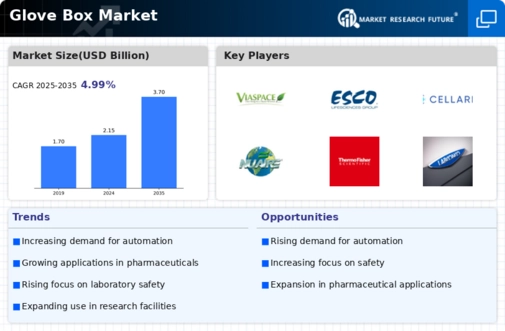
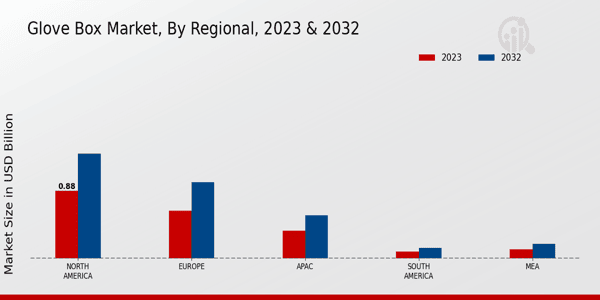
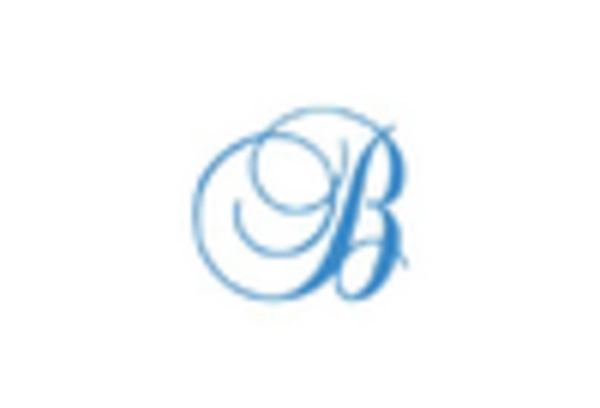
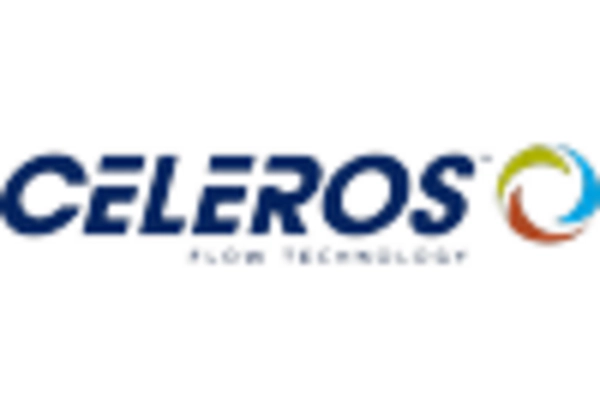
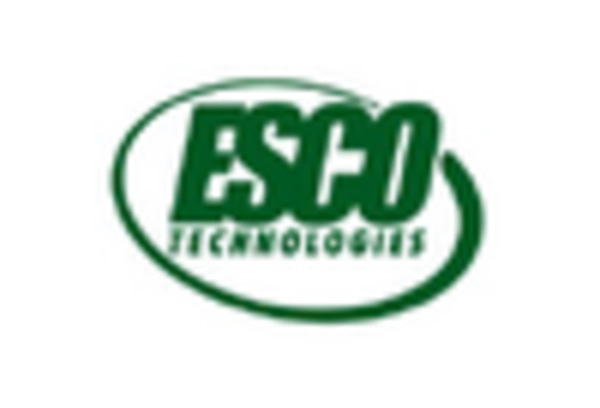
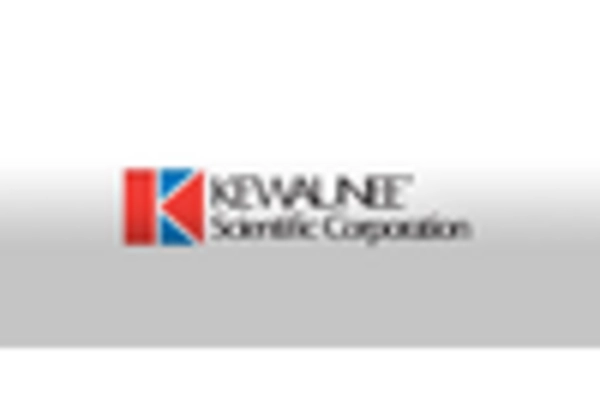
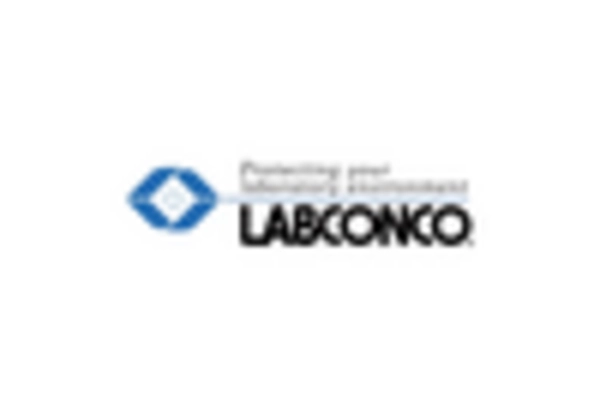
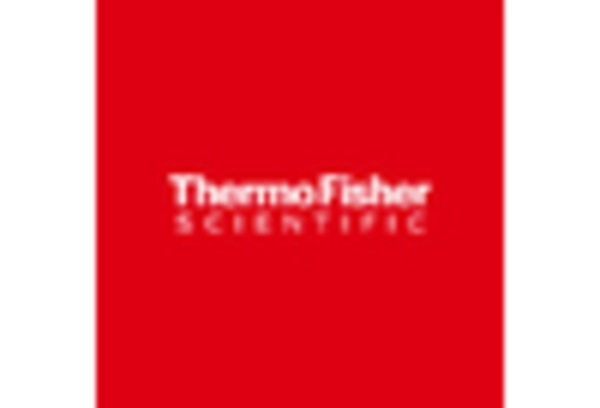

Leave a Comment